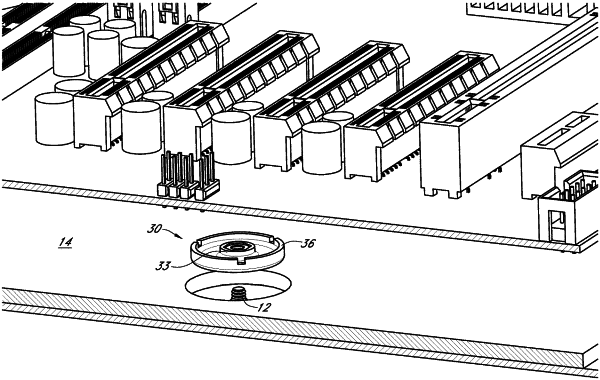| CPC H05K 7/142 (2013.01) [H05K 7/1434 (2013.01); H05K 13/00 (2013.01)] | 2 Claims |

|
1. A method of providing a circuit board mounting location at a point about a location on the circuit board which does not have a fastener receiving hole therethrough, the method comprising the steps of:
providing a circuit board having a front side, having electronic circuitry disposed thereon, a back side opposing said front side, and a perimeter edge;
providing a fastener coupler, with a rigid three dimensional shape, having:
a stabilization rib perimeter wall, with a top side and a plurality of adhesive exit voids therein;
a central fastener penetrating portion;
a stabilization disk planar bottom extending between said stabilization rib perimeter wall and said central fastener penetrating portion, configured in combination to retain therein two component flexible polyurethane adhesive;
coupling the fastener coupler to only the back side of the circuit board at a first location displaced from all portions of said perimeter edge and where no fastener receiving hole is located through the circuit board; and
coupling the fastener coupler to a chassis, located on the back side of the circuit board and thereby coupling the circuit board to the chassis at the first location.
|